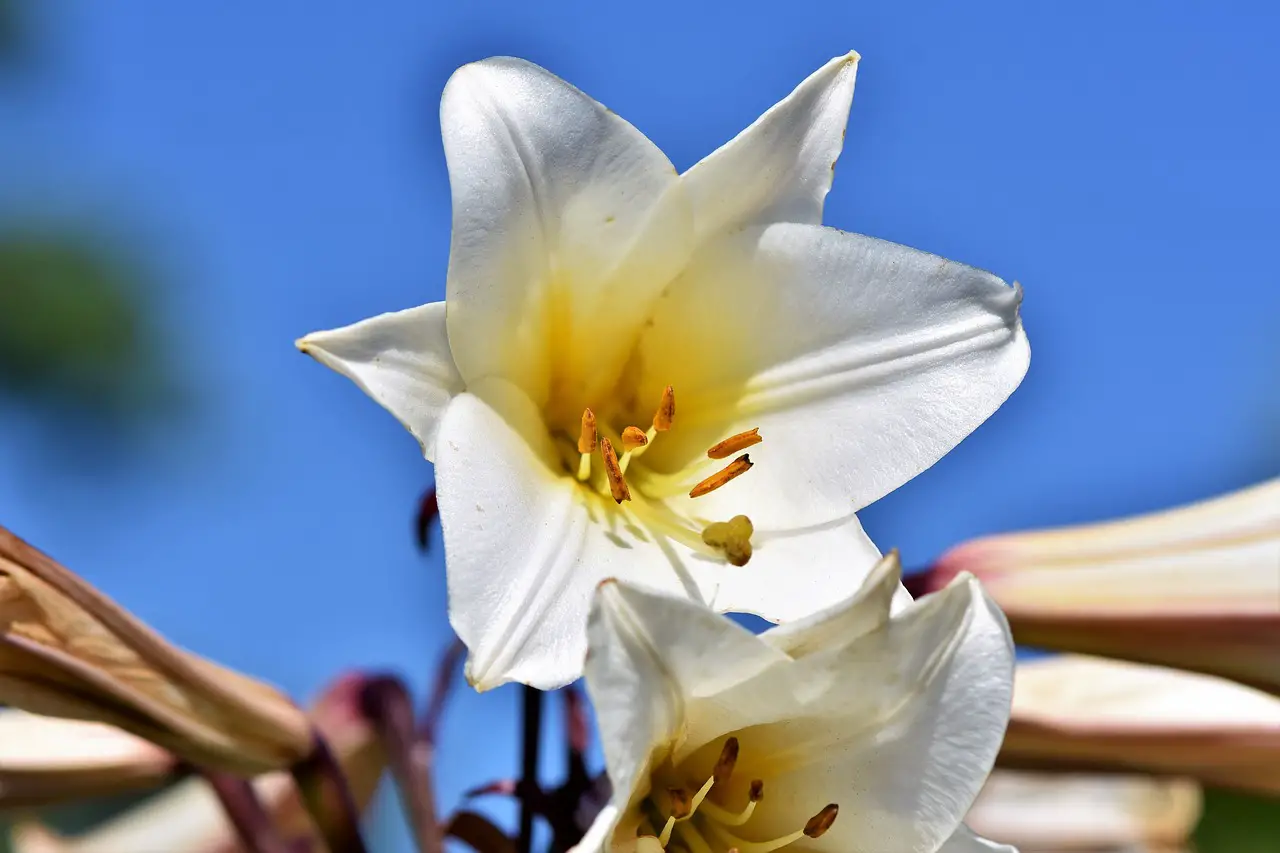Last Updated on February 15, 2022 by Real Men Sow
The tall stems of lilies make them a stunning choice for their exotic beauty. They thrive in full sun to partial shade, good air circulation and consistent water levels. Lilies can be cared for in the same way as perennials and bulbs, but what should you do when lilies finished flowering?

What To Do When Lilies Have Finished Flowering?
Removing flowers from lilies
You should immediately remove your lily flowers once they have begun to fade. You should not allow the lily flowers to fade. The spent blooms will, as with all flowers, turn into seeds. The energy of lilies is limited and most of it is diverted to producing seeds. That energy can be used instead to produce more flowers if you prevent it from fading.
Remove Lily Seed Pods When Lilies Finished Flowering
You can remove the seed pods from your lilies after they have bloomed. This can be done by leaving it until spring or autumn when it can be cut above the soil.
Removing the Flowers and Stems Would Make Them Produce Less the Following Year
You can remove spent blooms by simply cutting them off, but it is usually quite simple to just pinch them off by hand. You can also bring nature indoors and cut the stalks just before the flowers are to bloom. These bulbs will last several days if stored in cold water and indirect sunlight. The downside, however, is that bulbs won’t do as well the next year because there is very little growth.
You can either cut the blooms and throw them away, or you can cut the stalks to bring them inside your home. However, disinfecting tools should be done every time you use them. Wipe them clean with a mixture of 9:1 bleach to water or rubbing alcohol. Between each cut, wipe the blades clean. This will prevent the spread of diseases.
Pruning Lilies When Lilies Have Finished Flowering
You might feel tempted to trim the foliage while you are removing spent blooms. Do not. The yellowing of the foliage is a sign that the bulbs are preparing for the next growing season. You are reducing the lily’s energy by cutting back yellowed or faded foliage. You can trim your plants once the plant has completely died, but only after that.
Lily Stems Should Not Be Cut Until They’re Yellow and Brown in Autumn or Spring
You can identify the location of the growth by leaving it in place, even if it is discolored, the next spring to avoid digging them up. Because lilies are soft bulbs, even minor scratches with a shovel could cause serious damage. If you don’t know where your lilies are or if you regularly garden around them, it is a good idea to wait until spring.
Potted Lilies: What To Do With Potted Lilies
If your lilies are in pots, the same is true for removing the seed pods and flowers. Once the stems have turned yellow and brown in autumn or spring, you can remove them.
Diseased Stems Pruning
One exception to the rule about removing foliage is when there is a disease. If you see any signs of disease, disfigured leaves or other symptoms, it is best to remove them. You should remove any plants with evidence of mosaic virus or mottled leaves. This will prevent the disease from spreading to other plants. Root rot can be treated by rectifying the soil, but it is more possible to have to kill the entire plant.
There is not much to be done when it comes to lily pruning, but you can catch some exceptions and the earlier you catch them and take care of them, the better.


